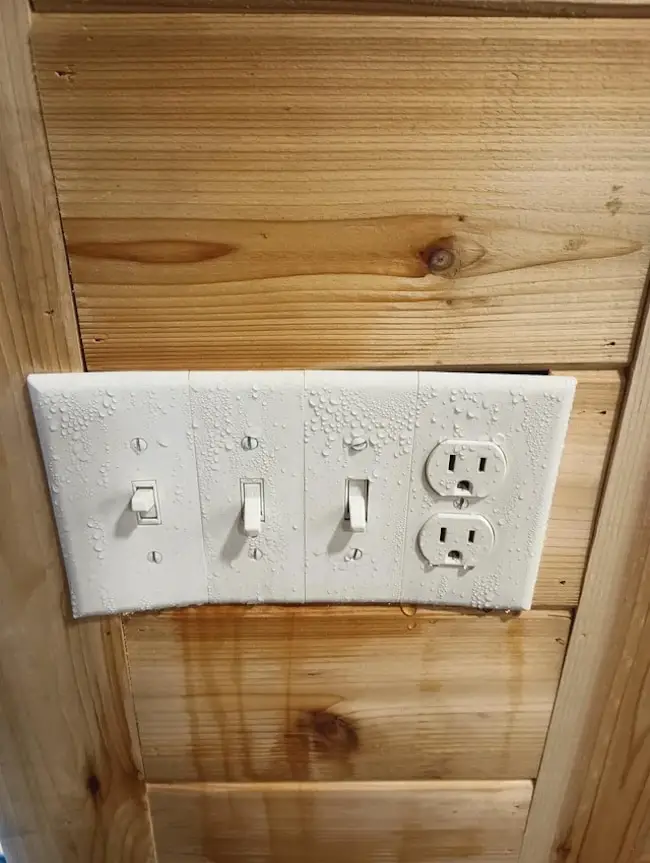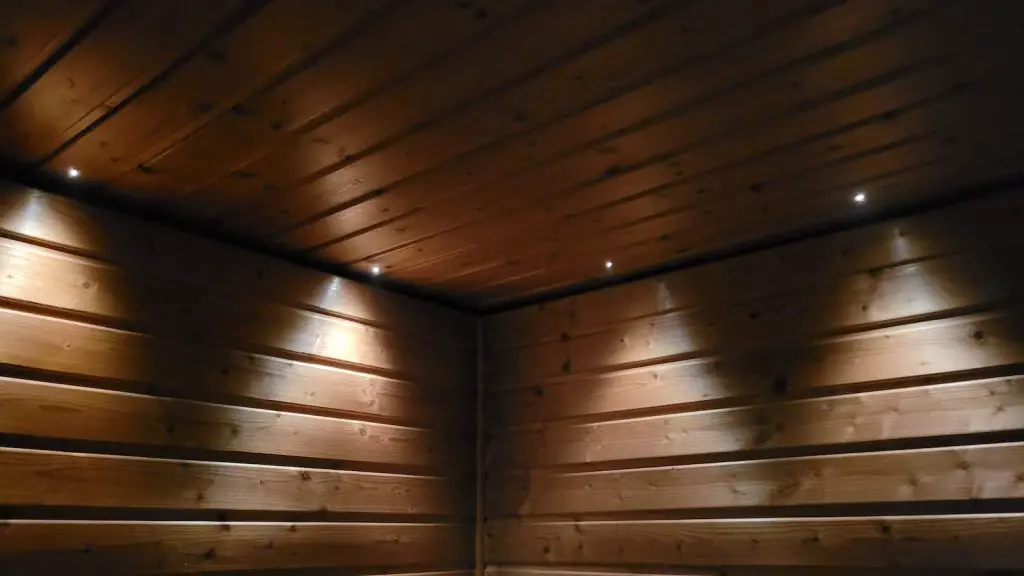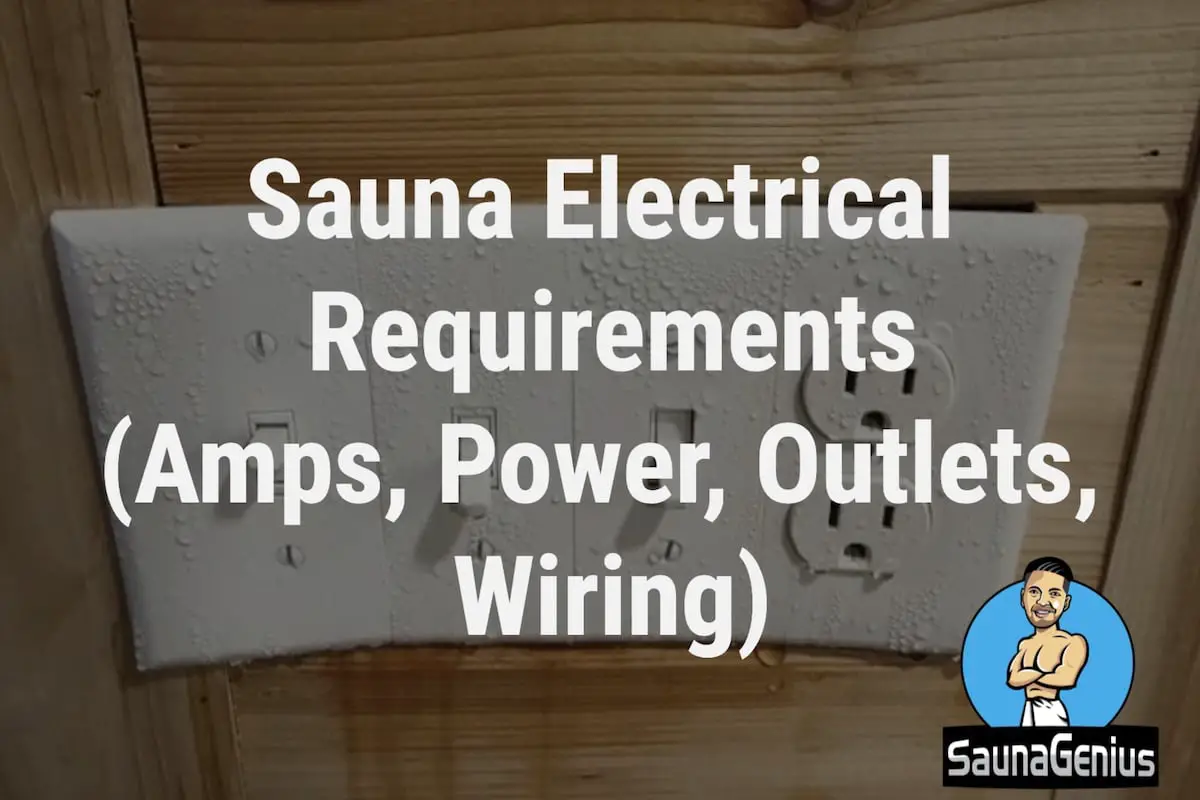It’s important to follow all electrical requirements when installing a sauna to ensure your safety and the proper functioning of the sauna. It’s often a good idea to have a qualified electrician handle the installation to ensure it is done correctly.
In this article, we�ll cover everything you need to know about the electrical requirements for infrared saunas and normal electric saunas.
Are You Allowed to Do Electrical Work on Your Own Sauna?
In short, you probably won�t need an electrical permit to install a new sauna heater, but if you are not sure what you are doing, it is always best to get a qualified electrician to install your sauna, wiring, or other electrical work needed.
Before doing any electrical work yourself, check your local regulations to see if you need to get an electrical permit.
The requirements for getting an electrical permit may depend on your state, but according to Clover Electric, you need to get a permit if you are installing new permanent wiring, an outlet, or a new electrical device.
Ask your local building department for more information. They can help you determine whether your specific case requires a permit.
Keep in mind that if you need a permit, you also need to have a certified electrical inspector inspect the work.
Even if you might not need it, getting a permit might be a good idea if you intend to sell or rent your property. If you have the proper permit, you cover all your bases when selling your property. Otherwise, you can declare any work that was done without a permit when selling.
Sauna Electrical Requirements
There are a few key electrical requirements to consider when installing a sauna:
1. Power Supply
The sauna will need to be connected to a dedicated power circuit with a sufficient amperage rating to support the electrical load of the sauna. It’s important to consult the manufacturer’s instructions to determine the required amperage for your specific sauna model.
How Many Amps Does a Sauna Use?
A smaller 6-7 kW heater requires usually 30 amps, which typically means 3x10A fuses.
A larger 9kw heater requires usually 3x16A, and larger heaters may need up to 60A.
Check the specifications for the specific heater you have from the manufacturer�s instructions.
2. Voltage
Saunas typically operate on a voltage of 240 volts and 60Hz frequency. It’s important to ensure that the electrical outlet or circuit you are using is rated for this voltage.
3. Wiring
The wiring for the sauna should be installed in accordance with local electrical codes and the manufacturer’s instructions. It’s recommended to have a qualified electrician install the sauna’s wiring.
The sauna wiring regulations may depend on your municipality or state, so please talk to your local building department or qualified electrician.
A “dedicated” 220-240 volt, 30-60 amp breaker and GFCI must be used for the sauna.
The circuit must be �dedicated�, meaning it should only supply power to the sauna and nothing else. The voltage of the circuit must be between 220-240 volts and the breaker, which is a safety device that interrupts the electrical current if it becomes too high, must have a capacity of 30-60 amps.
4. GFCI protection
It’s important to install a ground fault circuit interrupter (GFCI) on the electrical circuit that powers the sauna.
A GFCI is a device that monitors the electrical current flowing through the circuit and will quickly shut off the power if it detects an imbalance, which can prevent electrical shock.
5. Outlets and Light Switches
Do not install outlets or light switches inside the sauna room!
Any outlets and switches need to be installed outside of the sauna room because the sauna is a wet environment can installing outlets and switches inside the sauna can cause danger.
Here�s an example of what not to do:

Photo source: Reddit
6. Lighting, Speakers, and Other Appliances
Any appliances you install in the sauna need to be rated to be used in wet environments.
Fiber-optic LED lighting systems are commonly used in saunas. In this type of lighting, the LED light is located outside the sauna room, and multiple fiber-optic cables are installed in the ceiling or side panels of the sauna.
Here�s an example of fiber-optic sauna lighting:

Instead of bringing your AirPods to the sauna, you might want to install speakers in the sauna, in which case make sure they are waterproof or water-resistant. It�s best to install speakers near the floor of the sauna where the temperature is the lowest. Install speakers in the driest parts of the saunas.
Infrared Sauna Electrical Requirements
Infrared saunas use typically much less power.
The infrared sauna power supply is typically between 1kW and 2kW (compared to 6-9 kW for electric saunas).
Infrared saunas require usually a dedicated 110V and 20 amps circuit, protected with GFCI.
The infrared sauna electrical requirements may depend on the model you are using, so always check the manufacturer�s specifications or consult a licensed electrician.
How Much Power Does a Sauna Use
In an article about the costs of operating a sauna at home, we calculated how much power electrical saunas use.
A 6 kW heater is commonly used for saunas for 3-4 people, while an 8-9 kW heater is powerful enough to heat even a large sauna.
When it comes to energy consumption, a typical sauna session requires heating for 15 minutes to an hour, followed by another hour of use. During this time, a 6 kW heater will consume approximately 4-5 kWh during the preheating phase and 3-4 kWh during the next hour.
On average, a 6 kW heater will consume around 7-9 kilowatt-hours in one sauna session. For larger 8 kW heaters, the consumption jumps to approximately 5-7 kWh in the first hour and 4-6 kWh in the second hour. This means that, overall, an 8 kW heater will consume approximately 9-13 kilowatt hours.


Dear sauna genius,
I live in Europe but am moving to the caribbean. I have a infrared one person sauna from healthmate but it is a 220V. Is it safe to take and use an electrical inverter. It also has a digital display. Will this still work safely? Can you recommend an invertor?
Thank you for your help.
Hey Dien,
Healthmate writes on its website not to use power adapters. Check the user manual of your device what voltages it supports. If it says “110v – 220v” or similar you should be fine.
I have a wood fired sauna in my basement with a shower. Can I install an electric sauna stove? Are there rules about an electric sauna stove and a shower in the same room?
I’m repairing an electric sauna, the control pad RG 6 cable is not connected to the unit my question is if the TH6 connectors are crossed or straight